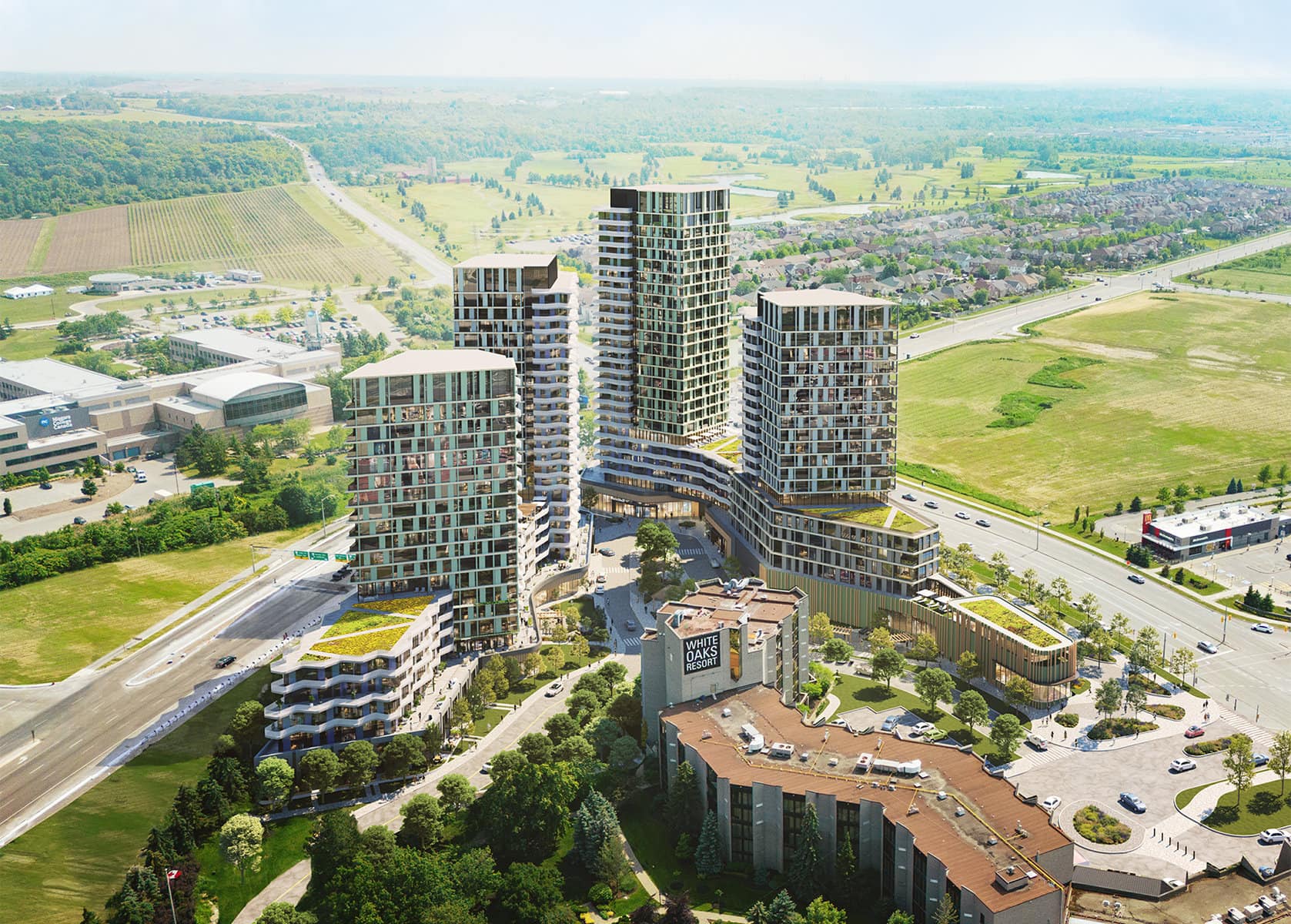Within the foreseeable future, Glendale will be home to 20,000 – or more – residents of Niagara-on-the-Lake.
That’s likely to be over half of the town’s projected population.
This will inevitably alter the complexion of our local government, as the concentration of political representation shifts from the historic population centres to Glendale to fairly reflect the needs of the majority of voters.
Bluntly, if action is not taken now at this pivotal moment in time to embrace and fully integrate Glendale into the town’s existing warp and weave, the character of Niagara-on-the-Lake will be irrevocably altered.
And, not by the will of existing Glendale residents, most of whom have expressed their desire to be embraced into that character through sympathetic town planning and development.
If we allow the construction of isolated islands containing the up-thrusting phallic symbols of a failed, unsustainable 20th-century human “warehousing” model, it will be the occupants of those cubicles in the sky that will dictate the future of Niagara-on-the-Lake.
On Jan. 31 this year, town staff brought forward the White Oaks application for official plan and Zoning amendments – to the mixed-use high-rise density zone – for consideration by the urban design committee.
Specifically, asked for committee comments on building materials, building design, height, building locations, community connectivity and any additional comments on matters related to urban design.
My objective in today’s column is to simply explore each of these criteria against the proposed White Oaks development rather than comment on the committee’s discussion.
Should you wish to see that meeting, it can be found on the town website, under “Meetings, Agendas & Minutes,” scrolling down to “Past Meetings” and looking under the urban design committee tab for the meeting video: notl.com/council-government/meetings-agendas-minutes.
Let’s start with a brief description of the proposed development.
There are two buildings (containing two towers respectively) arranged in a rough V-shape with the apex of the V located at the Glendale and Taylor roads intersection with the V’s widest point facing the QEW.
The two buildings are completely separated on the right side of the apex by a pedestrian walkway, while the building on the left side of the apex is punctured by a pedestrian tunnel walkway at ground level.
The contiguous base of each building is five storeys tall – these bases are surmounted by four towers: one at 17 storeys; one at 18 storeys; one at 21 storeys; and, at the apex of the V, is one at 25 storeys.
The interior of the V is principally given over to a private access road with a terminus loop and hardscaped walkways punctuated by container plantings.
Due to the pie-shaped lands available for this development, there is very little space available for in-ground plantings and, at best, would necessitate the use of bushes, shrubs and small columnar form trees.
From the drawings included with the application, the building materials above the first storey appear to be the typical glass, concrete and metal commonly used in these types of high-rise residential buildings.
Where present, the balconies stand proud of the buildings presenting a gentle sawtooth pattern complemented by metal mesh railings and provide the singular saving grace to what would otherwise be simple linear columns (something that is evident where balconies on the buildings are absent) dominated by glass surfaces.
By contrast, the buildings’ first storeys – particularly on the street facades – show a much more diverse use of materials, colours, textures and patterns which, complemented by its gently curving lines, provide a richer visual experience in comparison to the dominant and largely generic storeys above.
So, as proposed, there will be two five-storey buildings running parallel to Taylor Road and Glendale Avenue respectively – each of which presents an over 50-foot high barrier to the street, effectively walling the development off from the general Glendale community.
On the corner of the Taylor-Glendale intersection will rise the tallest (27-storey) tower standing akin to a watch tower over a fortress.
Yes, there is a “gateway” gap between the two buildings on Glendale Avenue, however, given the development’s north-south orientation, that gateway will fall within a building’s shadow for a significant portion of the day.
Further, that gateway will lead into an interior space that will also experience a fair amount of shadow.
Speaking of that V-shaped interior space between the buildings, I raise a real concern vis-à-vis noise pollution therein.
Think of that space as a funnel, the mouth of which directly faces the QEW with its “bottom” closed off by a 25-storey high building.
I suspect that today’s barely noticeable road noise in this location would increase to a cacophony in that proposed interior space should this development proceed as designed.
Moreover, the reflected noise could have a deleterious impact on the existing White Oaks Resort and Spa.
Moving on to the question of building height, it is no secret to my regular readers that I consider high-rise buildings to be dehumanizing.
This position, informed and supported by a multitude of experts and academics on a global basis, encompasses the facts that residential high-rises are not on a human scale, increase isolationism with resultant derivative physiological disorders and associated healthcare costs, create barriers to community integration and decrease housing affordability.
To demonstrate this last point, allow me to quote Dr. Suzanne Crowhurst Lennard, director of the Making Cities Livable International Council, who observed the following: “Tall buildings offer increased profits for developers. However, the higher a building rises, the more expensive is the construction.”
These increased costs are expressed in higher per-square-foot purchase prices.
And she continues, “Tall buildings inflate the price of adjacent land, thus making the protection of historic buildings and affordable housing less achievable.”
However, my opinion vis-à-vis the unsustainability of high-rises is not limited to only these considerations but is further reinforced by much more practical and climatically important matters.
A study conducted in 2016 by Lighthouse Environmental Consulting Ltd. for City of Vancouver, Metro Vancouver, Surrey, Victoria and the Building Owners Association of B.C. found the energy performance of low-rise/medium-rise multiple-unit residential buildings was 22 per cent better (per square meter) than high-rise multiple-unit residential buildings.
The City of Seattle’s data set – derived from its Energy Benchmarking and Reporting Program – indicates that multi-family buildings higher than nine stories currently use 60 percent more energy per square foot than comparable four-story or five-story buildings.
Indeed, in an article written by Ruth Saint and Francesco Pomponi from Edinburgh Napier University, in which they spoke of the results of their study, reported that “densely built, low-rise environments are more space and carbon efficient, while high-rise buildings have a drastically higher carbon impact.”
They went on to state their findings show that high-density low-rise (buildings under 100 feet tall) cities, such as Paris, are more environmentally friendly than high-density high-rise cities, such as New York.
Looking at the fixed population scenarios, when moving from a high-density low-rise to a high-density high-rise urban environment, the average increase in whole life-cycle carbon emissions is 142 per cent.
In any case, in White Oaks, we have a proposed development that will lack – in the real sense – community connectivity, is divorced from the surrounding landscape, with an architectural design and materials completely distinct from, and unrelated to, anything in Niagara-on-the-Lake – natural or built.
Furthermore, its high-rise towers are unsustainable on multiple levels.
High density? Sure. High-rise? A complete mistake.
Brian Marshall is a NOTL realtor, author and expert consultant on architectural design, restoration and heritage.











